Clouds scurry across the hallway of this London flat. Not real ones, of course, but the low-lying stratocumuli of a monochrome wallpaper by Fornasetti. It’s a clever device, calculated to pull your gaze towards the view of the Thames which flows directly beneath this eighth-floor home in a watery ribbon of greens and browns that change with the seasons.
Rachel Chudley, who designed the interior, likens the hallway to a “birthing portal… you step through the front door and – whoosh! – you’re immediately transported towards the river.” Her growing reputation for expressive style has drawn likeminded clients, such as Lulu Guinness, doyenne of vintage bag design. This project, however, was closer to home.
Set in a labyrinthine, brick-built 1980s block, the one-bedroom home belongs to her family and it’s where – in normal times – they gather to socialise, celebrate or stay during trips to the city. They are a tight-knit clan. Chudley’s siblings Alice, a former patisserie chef, and George, an engineer who lives in Manchester, recently joined her business. Everyone had a say in choosing the Docklands property. “Fortunately, we have the same aesthetic,” says Chudley. “This was the first property we saw. It’s modest, but the sense of privacy and setting won us over.”

This stretch of the river, upstream from St Katharine Dock, is deep and tidal. “Before it was redeveloped in the 1980s, the area was full of warehouses and factories,” says Chudley. “Because the water’s tidal, the landscape is constantly changing. It’s rare to feel so connected to the river in London. I wanted to bring a sense of that ebb and flow inside.”
The family gave her free rein to transform their riverine retreat. “Even before we’d exchanged contracts I was doodling ideas. It had to feel cosy for one person, but sociable when we’re all together.” The 900sqm apartment, which includes a shower room and open-plan living space, was too compact for structural changes. “I had to delve into my bag of tricks,” she says. There’s a lot you can do with pattern and colour. It was a large challenge in a small space.”
To bring “movement and drama” to the railway-carriage-like living room Chudley designed asymmetric shelving, lit softly by night, adding textiles, including a rippled silk rug to mimic the play of light on water. Curtains made from plain fabric overlaid with vintage saris are another of her motifs. “I like to treat rooms like canvasses, layering colours, shapes and surfaces,” says the art-history graduate.
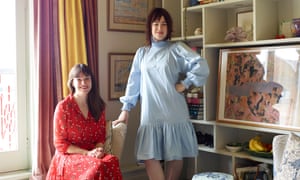
A glinting Japanese screen divides the dining area from the kitchen, which has a contrastingly glamorous feel. Chudley kept the carcasses, but added new doors, painted in a deep plum, framed by the brass skirting board. She also designed the sparkling glass shelving. When the lights are dimmed, you feel you’ve stepped into a lacquered jewellery box.
There was little left in the family coffers for new furniture. Most of it, like the midcentury Danish table and chairs, was found on eBay. Chudley is particularly fond of the inlaid Arts and Crafts library chair, which folds out to become a set of steps, and the “eccentric” lamp with its dangling shades, found in a Paris market.
Much of the art here has a personal connection. A pair of watercolours, hung low to echo the shoreline, were painted by an ancestor, the English impressionist Fred Mayer, a contemporary of Walter Sickert. In the bedroom, a glowing abstract is by Joseph Goody. The pair met at the Cob Gallery, in London, where Chudley once ran a series of pop-ups: “I’d paint the walls and we’d ask artists to respond to a different themes, like ‘Surreal Women’. It was bonkers but fun. We mixed new artists with established names, like Gilbert & George, alongside furniture and unusual bits and pieces. It’s how I like to work, combining different eras with the odd, out-of-kilter thing. Interiors should be joyful, not perfect.”
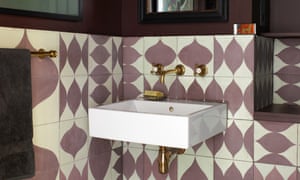
She collaborated with another artist, her father-in-law Donald Kaufman, to create the paint colours in the apartment. The New York-based Kaufman, who has made colours for institutions including the Metropolitan Museum of Art, is known for his highly pigmented hues. It is hard to pinpoint their exact colour, which is precisely the point. “Don based his research on nature and the way colours change according to the light or weather conditions,” explains Chudley.
In the living room, she used a greeny-blue offset by the high-gloss gold ceiling which bounces light into the room. The fern print on the headboard mimics the vegetal growth of the riverbank.
We step on to the tiny red balcony to inspect the view. A river taxi zips past, tailed by a sombre barge. When the tide recedes, revealing the silty foreshore, down come the mudlarkers with their wellies and ziplock bags. A whale once swam past; seals with baleful eyes occasionally appear. For Chudley, that’s the attraction. “There’s always an element of surprise when you live by the river,” she says.
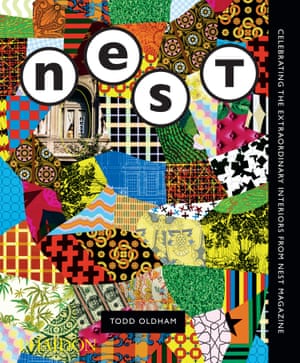
Home front: the best interior books
For inspiration and practical tips, these five luxurious books have everything you need to transform your home
The Best of Nest Nest was the otherworldly magazine of interiors created by Joseph Holtzman from 1997 to 2004, and across a total of only 26 issues. With photography by artists and writing by literary luminaries, Nest was an art piece; each issue was uniquely golden. Phaidon, £75
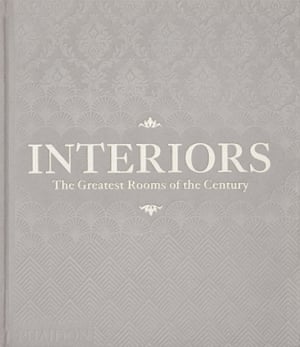
Kabinett & Kammer From whittled songbirds to industrial apparatus, artist Sean Scherer uses disparate historical objects and layers them into beautiful ensembles to create his interiors. This book is both a celebration of his work and a practical guide to collecting. Vendome Press, £29.95
Interiors of the Century More than just a celebration of decorators, designers and architects, this glossy book highlights over 400 exquisite interiors created by fashion designers, artists, style icons and film stars. It’s a testament to residential interior design and decoration. Phaidon, £59.95
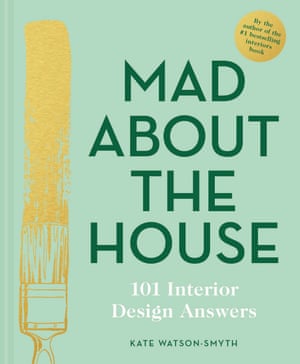
House of Print Molly Mahon is a self-taught textile designer who specialises in block printing. Here, you can explore the craft through her designs and influences. She also offers practical skills and potential ways to transform your creations into homeware. Pavilion, £16.99
Mad About the House Subtitled ‘101 interior design ideas’, this comprehensive book, which features answers to all those questions about interior design that you were afraid to ask, is by Kate Watson-Smyth, the woman behind the UK’s number one interiors blog. Pavilion, £20
from Lifestyle | The Guardian https://ift.tt/37cbt9D
via IFTTT

comment 0 Comment
more_vert